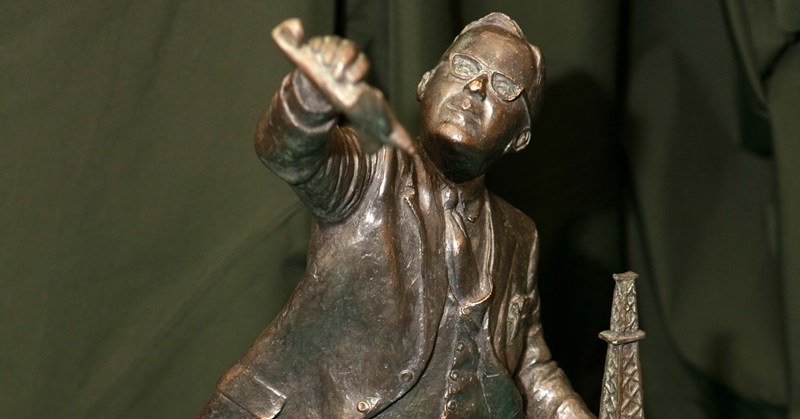The Robert Watson-Watt Society of Brechin looks set to be granted planning permission for a permanent memorial to commemorate the man recognised as “the father of radar.”
Angus Council’s planning service is recommending to the development standards committee that the project be approved.
The monument is being entirely funded by voluntary contributions, local fund-raising, supporters and donations.
It is proposed that the 3.6-metre bronze statue, on a base and plinth of locally-sourced sandstone, be built in the north-east corner of St Ninian’s Square and have a paved surround.
A number of sites were considered for the statue and the society felt the proposed location would have the most balancing and complementary effect on the existing landscape.
The site was also favoured as it would create fewer problems for passing traffic and still be visible for all roads.
The Brechin Townscape Heritage Initiative project manager has said the placement would fit well with and enhance the St Ninian’s Square conservation area where there are a number of listed buildings and structures.
The planners have said the square contained a listed sundial and the Dalhousie Fountain.
Therefore, the location seemed an appropriate place for a memorial that celebrates an important historic figure for Brechin.
The society has worked closely with Angus Council to ensure the final design meets rigorous conservation, design and safety criteria.
The society said, “We are looking forward to having the finished monument located in the centre of Watson-Watt’s birthplace.
“We are certain it will prove a very suitable addition to our collection of artwork and exhibits in and around Brechin.
“We also believe that this monument will provided an added attraction of historical interest to visitors combined with our expectations for an interactive display detailing the journey of radar and especially the work achieved
by Sir Robert Watson-Watt and his team, which assisted the RAF in winning the Battle of Britain.”
Several styles were scrutinised by the society and resulted in the selection of a traditional-styled monument by sculptor Alan Herriot, highlighting the relationship of Watson-Watt with the RAF and the Home Chain radar stations.
